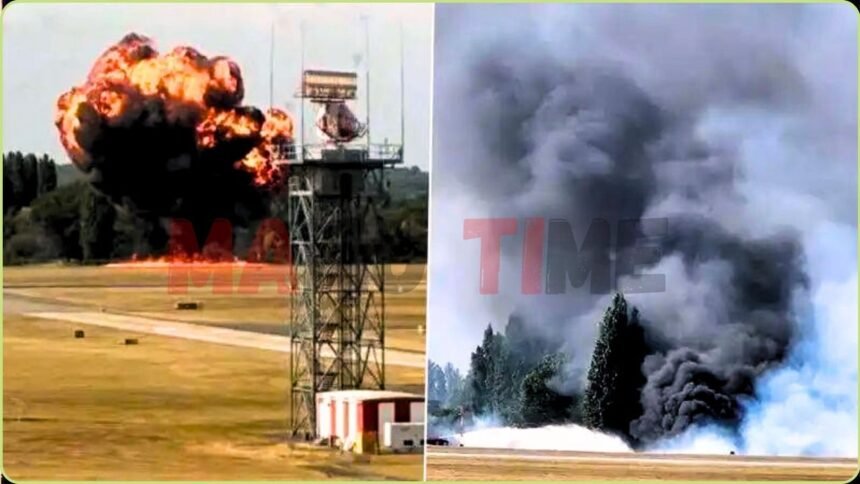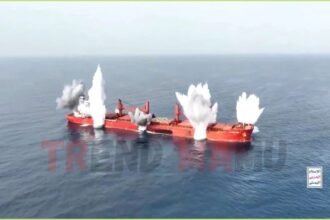London Southend Airport Plane Crash-A Tragic Incident Unfolds. Catastrophic Crash and Immediate Aftermath
On July 13, 2025, a Beechcraft B200 Super King Air, operated by Zeusch Aviation, crashed moments after takeoff from London Southend Airport in Essex, UK, erupting into a massive fireball that sent shockwaves through the local community.
The aircraft, registered as PH-ZAZ, was en route to Lelystad, Netherlands, after completing earlier flights from Athens to Pula, Croatia, and then to Southend. Eyewitnesses described a horrifying scene: the plane, which had climbed to just 175 feet, suddenly banked sharply to the left, inverted, and plunged nose-first into the ground near the runway perimeter.
The resulting explosion produced thick black smoke visible for miles, with social media videos capturing the intense flames and chaos. Emergency services, including Essex Police, Essex County Fire and Rescue, and the East of England Ambulance Service, responded swiftly, deploying multiple ambulances, fire crews, and an air ambulance to the scene. The airport was immediately shut down, with all flights canceled and a cordon established, expected to remain in place into Monday.
Uncertainty Surrounding Passengers and Crew
The exact number of people on board the Beechcraft B200 Super King Air remains unconfirmed, adding to the anxiety surrounding the incident. The aircraft, a twin-engine turboprop designed for short-haul charter and medical evacuation flights, can carry up to nine passengers and two crew members.
Reports suggest it was on a medical transport mission, possibly involving organ transport or patient transfer, but whether a patient was on board is unclear. Zeusch Aviation, the Dutch operator, issued a statement confirming the accident involving their SUZ1 flight and expressed support for the ongoing investigation while offering condolences to those affected.
Authorities have not yet confirmed casualties, but the severity of the crash—described by witnesses as a “corkscrew” descent followed by a devastating explosion—has led some reports to speculate that survival was unlikely. The lack of official details on the passengers’ and crew’s fate has heightened public concern, with social media platforms like X flooded with expressions of shock and sympathy.
Investigation and Historical Context
The UK’s Air Accidents Investigation Branch (AAIB) has taken charge of probing the cause of the crash, focusing on factors such as mechanical failure, pilot decisions, weight distribution, and maintenance history.
Eyewitness accounts, including one from a father who saw the plane wave to his family before its fatal descent, will be critical to the investigation. This incident marks the second Beechcraft crash at Southend Airport, following a 1987 accident involving a similar model that killed the pilot.
Despite the Beechcraft B200’s reputation as a reliable aircraft, often used for critical medical missions due to its versatility, questions about its maintenance and the extreme weather conditions—unusually warm and dry for the UK—have surfaced.
The crash’s impact was felt beyond the airport, with nearby Rochford Hundred Golf Club and Westcliff Rugby Club briefly evacuated as a precaution, though the latter’s evacuation was later deemed unnecessary. The community remains in shock, with local MP David Burton-Sampson and Transport Secretary Heidi Alexander urging the public to avoid the area and expressing solidarity with those affected.
Disruption and Broader Implications
The crash led to significant disruptions at London Southend Airport, with easyJet canceling at least ten flights, including routes to Faro, Palma de Mallorca, Malta, and Pisa. Inbound flights were diverted to Gatwick and Stansted, affecting around 1,700 passengers who are now entitled to alternative transport and accommodations under air passenger rights rules.
The airport’s closure, described as indefinite, has left travelers in limbo, with the airport advising passengers to contact their airlines for updates. The incident draws parallels to a recent Air India crash in Ahmedabad, where all but one passenger perished, amplifying concerns about aviation safety.
Social media reactions highlight the trauma of witnesses, including passengers on nearby planes who saw the fireball from the tarmac. As the investigation unfolds, this tragedy underscores the need for rigorous safety protocols and raises questions about the reliability of small aircraft used for critical missions, particularly under challenging environmental conditions.









